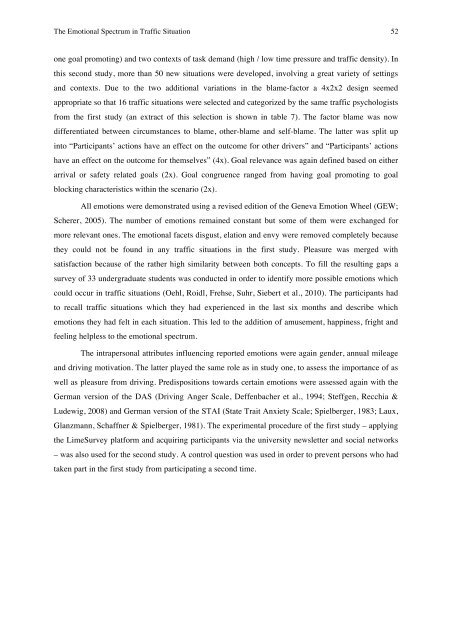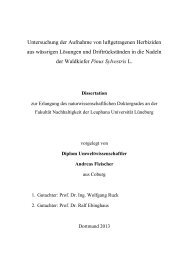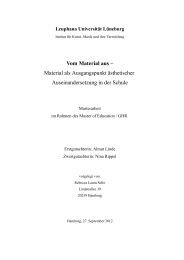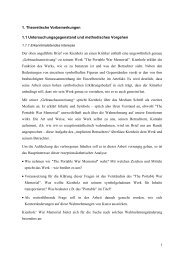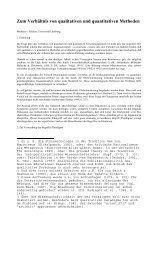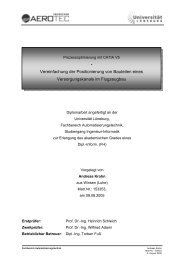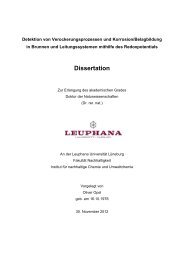Determinants of Emotional Experiences in Traffic Situations ... - OPUS
Determinants of Emotional Experiences in Traffic Situations ... - OPUS
Determinants of Emotional Experiences in Traffic Situations ... - OPUS
Create successful ePaper yourself
Turn your PDF publications into a flip-book with our unique Google optimized e-Paper software.
The <strong>Emotional</strong> Spectrum <strong>in</strong> <strong>Traffic</strong> Situation 52!<br />
one goal promot<strong>in</strong>g) and two contexts <strong>of</strong> task demand (high / low time pressure and traffic density). In<br />
this second study, more than 50 new situations were developed, <strong>in</strong>volv<strong>in</strong>g a great variety <strong>of</strong> sett<strong>in</strong>gs<br />
and contexts. Due to the two additional variations <strong>in</strong> the blame-factor a 4x2x2 design seemed<br />
appropriate so that 16 traffic situations were selected and categorized by the same traffic psychologists<br />
from the first study (an extract <strong>of</strong> this selection is shown <strong>in</strong> table 7). The factor blame was now<br />
differentiated between circumstances to blame, other-blame and self-blame. The latter was split up<br />
<strong>in</strong>to “Participants’ actions have an effect on the outcome for other drivers” and “Participants’ actions<br />
have an effect on the outcome for themselves” (4x). Goal relevance was aga<strong>in</strong> def<strong>in</strong>ed based on either<br />
arrival or safety related goals (2x). Goal congruence ranged from hav<strong>in</strong>g goal promot<strong>in</strong>g to goal<br />
block<strong>in</strong>g characteristics with<strong>in</strong> the scenario (2x).<br />
All emotions were demonstrated us<strong>in</strong>g a revised edition <strong>of</strong> the Geneva Emotion Wheel (GEW;<br />
Scherer, 2005). The number <strong>of</strong> emotions rema<strong>in</strong>ed constant but some <strong>of</strong> them were exchanged for<br />
more relevant ones. The emotional facets disgust, elation and envy were removed completely because<br />
they could not be found <strong>in</strong> any traffic situations <strong>in</strong> the first study. Pleasure was merged with<br />
satisfaction because <strong>of</strong> the rather high similarity between both concepts. To fill the result<strong>in</strong>g gaps a<br />
survey <strong>of</strong> 33 undergraduate students was conducted <strong>in</strong> order to identify more possible emotions which<br />
could occur <strong>in</strong> traffic situations (Oehl, Roidl, Frehse, Suhr, Siebert et al., 2010). The participants had<br />
to recall traffic situations which they had experienced <strong>in</strong> the last six months and describe which<br />
emotions they had felt <strong>in</strong> each situation. This led to the addition <strong>of</strong> amusement, happ<strong>in</strong>ess, fright and<br />
feel<strong>in</strong>g helpless to the emotional spectrum.<br />
The <strong>in</strong>trapersonal attributes <strong>in</strong>fluenc<strong>in</strong>g reported emotions were aga<strong>in</strong> gender, annual mileage<br />
and driv<strong>in</strong>g motivation. The latter played the same role as <strong>in</strong> study one, to assess the importance <strong>of</strong> as<br />
well as pleasure from driv<strong>in</strong>g. Predispositions towards certa<strong>in</strong> emotions were assessed aga<strong>in</strong> with the<br />
German version <strong>of</strong> the DAS (Driv<strong>in</strong>g Anger Scale, Deffenbacher et al., 1994; Steffgen, Recchia &<br />
Ludewig, 2008) and German version <strong>of</strong> the STAI (State Trait Anxiety Scale; Spielberger, 1983; Laux,<br />
Glanzmann, Schaffner & Spielberger, 1981). The experimental procedure <strong>of</strong> the first study – apply<strong>in</strong>g<br />
the LimeSurvey platform and acquir<strong>in</strong>g participants via the university newsletter and social networks<br />
– was also used for the second study. A control question was used <strong>in</strong> order to prevent persons who had<br />
taken part <strong>in</strong> the first study from participat<strong>in</strong>g a second time.


